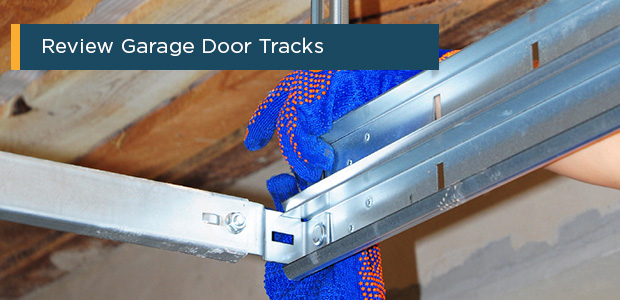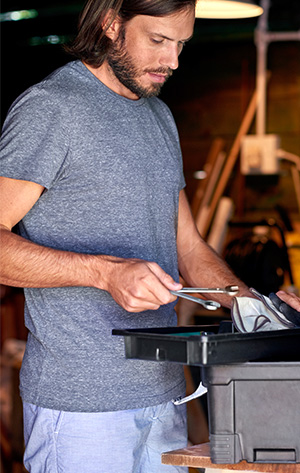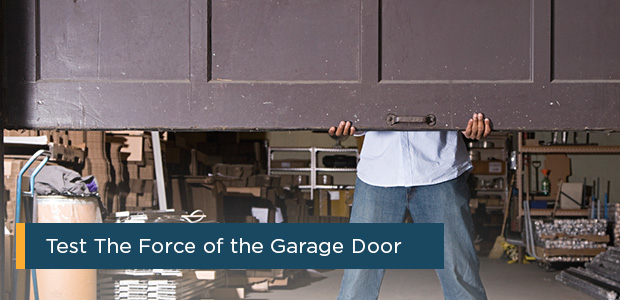What You Can do to Keep Your Door in Good Health
It’s easy to take your garage door for granted. It opens, closes and looks great, but what about the day it stops working? Few things can be as frustrating as a garage door that won’t open or as dangerous as a door that doesn’t work properly.
More than 30,000 people are injured by garage doors each year, so we’ve put together some maintenance tips for your garage door to keep everything safe and smooth.
As we get started, there’s one important thing to remember: Always have a professional come and inspect your door whenever it is hit by a car. Accidents require an inspection and testing of your systems that common overhead garage door preventive maintenance can’t cover.
First Steps for Best Preventive Maintenance on Garage Doors
A thorough review and tune-up of your garage are the best ways to ensure you get the longest life out of your door. With too much wear and tear or improper maintenance, garage doors can stick, lock or even fall on people or cars and do some serious damage.
Those accidents can occur when you’re performing garage door preventive maintenance, too. Here are the top four things to keep in mind when working on your door:
- Always unplug your door opener and tuck away any controls so your door can’t be activated.
- Clamp locking pliers onto the roller tracks below your roller whenever you’re working on an open door. This prevents it from dropping on you.
- Ensure all tension is removed from a door spring when you need to remove lift cables. These metal parts can swing wildly and cause severe lacerations if released improperly.
- Leave overhead torsion springs alone. It can be extremely dangerous to you and your home if you adjust or release the tension on these springs during maintenance. Always call a professional to work on this piece of your door.
Keep these tips in mind as you start looking over your garage door and review the best preventive maintenance list on garage doors.
Start with the Hardware
Wondering how to do preventive maintenance on your garage door? Always start with a quick visual inspection of the whole door and then of your hardware.
Look for damage to the door itself and call a professional if you see any major harm. Hitting the garage door can be an embarrassing event, so you may not be told of every incident in your home. After that, check for rust or breakage in your springs, tracks, fasteners, hinges, cables and roller wheels.
If you find damage or excessive rust and are comfortable with overhead garage door preventive maintenance as well as repairs, replace these parts. If you don’t have the tools, parts or know-how, then be sure to contact a professional. The most important thing is keeping yourself safe.
The Nuts and Bolts
The movement of your door will naturally cause the nuts and bolts on your brackets and roller tracks to shift or loosen. Check and tighten all of the roller brackets as well as any bolts that connect brackets to the rail itself. This activity is best performed monthly for preventive maintenance on garage doors.
Good Rollers
Many doors use nylon rollers that deteriorate over time, so checking them for chips and cracks is a top preventive maintenance tip for garages. For steel rollers, look at the bearings and check to see if there is a tilt to the wheel that can create uneven wear and damage. Replacements are available at most hardware stores and should come with simple instructions.
Never remove the bottom roller bracket during repair! There is an attached cable almost permanently under high tension, so it can snap, whip and cut, causing serious injuries.
Take a Lift Cable
Lift cables located on the bottom roller brackets will wear over time, especially in colder climates. Check the bottom — because that’s the part most often exposed to moisture — and remove any dirt or buildup. Old toothbrushes and other soft-bristled brushes work best. If the cable itself is worn or frayed, call a technician for repair because it too is under high tension.

Review the Tracks
Take a quick look at the garage door tracks themselves for bends, breaks, cracks or other damage. If you see something that looks pinched or worn, we recommend you call a technician. This damage may cause your door to get stuck or to fall, both of which are serious hazards.
If nothing looks off, move to one final check of the track and make sure it is plumb. Take your level and place it against the track. Use the top and middle bubbles to ensure the bracket is properly level. If not, unscrew the track support bracket a very small amount. You need just enough slack to move the track a small amount left or right.
Make your adjustments and then place a soft object, such as a wood shim, behind the track bracket. This will help you properly secure and tighten its bolts.
Overhead Garage Door Preventive Maintenance: Lubrication
Grinding metal not only sounds terrible, but it can also lead to a major failure of your garage door. That’s why having lubricant, especially white lithium grease, is a top preventive maintenance tip for garages.
Look up and locate the opener screw or chain. Spray this with white lithium grease for smoother operations. Do this at least once a year for best results.
Overhead torsion springs and extension springs located above roller racks also need a good cleaning. We recommend using a cleaner or lubricant on them twice a year. After spraying, it’s okay to leave the excess on, because it helps your springs have a longer life by preventing some corrosion.
The importance of regular garage door maintenance means a safer, happier home. A good lubrication regimen can keep your door working properly so it doesn’t drop or stick unexpectedly.
Sealed Up Tight
Moisture is a big troublemaker in the South, so keeping it out is part of the best preventive maintenance plan on garage doors. Every year, you should check the weather seal on the bottom of your door for wear or brittleness.
Replace the door whenever you start to see signs of damage or gaps that stay.
On wood doors, you can pry the old seal off with a flat pry bar. Other doors usually feature fasteners and connectors you’ll have to remove.
Make sure the wide angle of the flange is set to the inside of the door when you install a new seal. Replace fasteners or use one-inch galvanized roofing nails to attach your seal. On wood doors, it is best to nail down one side, pull the seal across the door and then nail down the other end. Nailing down the ends can ensure you get a proper fit — just be sure to nail down the middle, placing a nail every three to four inches.
A good seal can keep your door working properly and protect everything in your garage.
Top Preventive Maintenance Tips for Garages: Door Tests
After looking over the innards, it’s time to take a look at your door itself and make sure everything is working properly. Doors come with a variety of safety features and closing options, so be sure to test everything you have.
Regular garage door maintenance is important, so perform these tests at least once a month.
Emergency Reversals
We recommend you start reviewing your door by testing the automatic reversal system, because this needs to be repaired immediately if it is not working properly. For safest operation, it’s recommended you test this system every month.
The reversal system is designed to immediately stop your door from closing if it detects an obstruction. Place a large, solid object in the center of your doorway for this test — we suggest something along the lines of a cinderblock or a 2×4.
When the door comes into contact with the object, it should reverse quickly to prevent damage. If the object is harmed or the door doesn’t reverse, call a professional right away.
The U.S. Consumer Product Safety Commission mandated this system after a review of automatic door openers were found to kill or severely injure at least 85 children over a period of twenty years. While these systems are mandated in each new door, a 2013 review found as many as 40% of emergency reversal systems fail.
Stay Balanced
Balance your door to limit the harm that can come from the door closing on something and to remove gaps in its coverage. A well-balanced door will also perform better on the automatic reversal tests.
To balance your door, disengage the opener with the opener release handle. Lower the door until it is about halfway down the opening and then let go. If your door is balanced, it should rest in this position. Doors with springs that aren’t under enough tension will fall. You can tell door springs are under too much tension if the door rises back up.
Adjusting the tension on these springs can be difficult. If you don’t have experience handling this issue, we recommend you ask a professional for help.
Infrared Checks
Many modern doors use an infrared system to make sure the doorway is clear and the door can close safely. If you have one of these systems, first check to make sure the sensors are no higher than six inches off the ground.
To test the system itself, open your door. Stand near the sensor with a large object and use the remote to close the door. As the door begins to close, move the object back and forth in front of the sensor — this breaks the beam and should cause the door to rise.
If the system doesn’t reverse your door, check your manual for testing and troubleshooting options. We’re happy to come and help if you can’t determine how to adjust the system or if it continues to fail this test even after corrections.
Use the Force, Homeowner
This final door test is one of the top preventive maintenance tips for garages. The force test is one way you can ensure your door won’t close on a person or vehicle.
Perform this test by holding the bottom of your garage door as it closes. If the door doesn’t stop and reverse quickly, you’ll want to adjust the force setting to a lighter number. Each system is a little different, so consult your manual for adjustment options.
Always be sure to test your door a second time after you make any changes to the force setting.
Maintenance Tips for Your Garage Door
Not every maintenance tip we have for you is something that requires checking. Two of our favorite suggestions are one-time installations, but we recommend checking these parts when you do your monthly visual check. These installations can increase your door’s safety for just a few dollars and a few minutes of your time.
Attach Lift Handles
Garage doors straighten and gaps disappear as they close. Hundreds of fingers are caught in doors each year, and that can lead to crushing and even major cuts. The best way to avoid this harm is to install lift handles on the inside and outside of your door. You’ll have an easy place to grab that is designed to be safe for any finger.
One important consideration is to measure the space between your door and the top of your doorframe. If the space is tight, you may need to install a low-profile option.
Install a Containment Cable
Containment cables for spring doors are a great safety option and are one of our top preventive maintenance tips for garage door owners. If your extension spring were to break, it would whip around and cut anything or anyone in the nearby area. This harms hundreds of people each year.
A containment cable for the extension spring is able to prevent this type of activity when your extension spring breaks by stopping the recoil. You’ll spend just a few dollars on each containment cable, making them one of the best safety investments for your money.
Containment cables are bolted to the bracket at the front of your upper rail. Feed the cable through the extension spring itself and then bolt it to the other side. You’re creating a loop of the cable around the spring, and then you can secure it with a washer and locknut. That quick installation is safe for you to do yourself and takes just a few minutes.
Get the Help You Need
When learning how to do preventive maintenance on your garage door, you might come up against problems you can’t fix or don’t feel comfortable tackling. That’s common, and it’s always better to be safe when it comes to mechanics and preventive maintenance on garage doors.
Custom Door & Gate is here to help with any problems or tests you may need. Just use our easy contact page to get more information plus answers to questions about the tests above. If you’re facing a big problem, you can schedule a repair to get an estimate and learn more about repairs or replacements.
And if you’re looking at a door that won’t close or you think may present a hazard to your family, we want you to call us right away, no matter what time it is. We run two 24-hours emergency numbers: 919-524-2818 for homes and 919-369-2113 for businesses.
We know how great a garage door can make your North Carolina home or business look and how scary a malfunction can feel. Custom Door & Gate is here to help.




